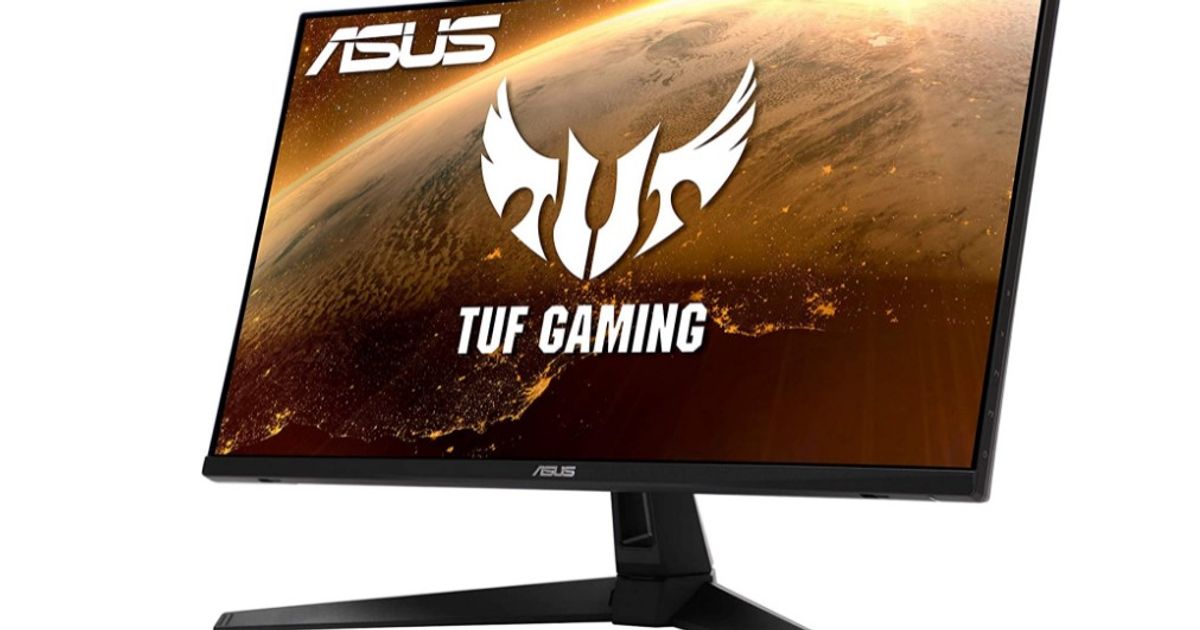When it comes to gaming monitors vs regular monitors the differences on the surface don't look too extreme, but when you look a little closer you can spot some that could make a world of difference if you're weighing it up between the two.
Regular monitors, in our eyes, are displays that are more orientated to work and productivity, while gaming monitors are very much designed with gaming performance in mind.
So let's take a look at what the key areas of difference are, and which one you should ultimately go for.
Regular Monitor vs Gaming Monitor
Here we'll break down some of the main differences between the two and where you'll notice them the most.
Regular Monitor vs Gaming Monitor Price
On the whole, you'll find that gaming monitors are more expensive than regular monitors.
That's mainly because of the performance-orientated design and engineering, which typically involves higher refresh rates, lower input lag, and features like G-Sync that ensure smooth visuals even when playing fast-paced titles.
You can find FHD monitors for under $150 in some cases, depending on the size, while with gaming monitors you're looking at around $200 minimum.
Of course, regular monitors can also tip the scales in the thousands, but those are more design-orientated displays with insane colour accuracy and resolution.
Regular Monitor vs Gaming Monitor Speed
So when we talk about 'speed' we're referencing how high the refresh rates are and how low the input lag and response times are too.
Refresh rates are simply how many times the image can 'refresh' or change in a second.
The higher the number, the more frames per second you'll be able to see, which is why people usually equate 120hz to 120 fps, 144hz to 144 fps and so on.
Read More: The Best 360hz Gaming Monitors
At the lower-end, regular monitors can have refresh rates under 60hz, which should be fine for everyday work, watching content, but won't be great for gaming.
They also don't always have features like g-sync and VRR support which prevent screen tearing, which is a must-have if you're playing anything on PC or console.
Regular Monitor vs Gaming Monitor HDR
HDR, or high dynamic range, is a feature that allows for higher contrast, a wider colour range and higher brightness.
It's important to have if you want your content to look more realistic, but it's not 100% essential.
With regular monitors, HDR isn't uncommon, especially if it's an entertainment monitor, but from what we've seen, the higher-end gaming monitors tend to lean more towards the higher certifications of HDR - case in point, some of the upcoming OLED monitors...
Regular Monitor vs Gaming Monitor Ports
Nowadays we're seeing more similarities when it comes to ports between regular monitors and gaming monitors.
Both are starting to have USB-C ports with varying levels of outward charging, however, HDMI 2.1 ports are still very much a gaming monitor feature at this time.
When it comes to the number of ports themselves, it's more on a case by case basis than one type of monitor having more as standard.
Regular Monitor vs Gaming Monitor Design
One feature you may not encounter on regular monitors is RGB lighting and other more gamer-orientated designs.
RGB lighting is associated more so with gaming than productivity and pairs well with a number of other gaming accessories, such as RGB speakers or keyboards for example.
Read More: The Best HDMI 2.1 Monitors so far
You'll also find that some gaming monitors are slightly more futuristic in style and feature sharp angles and lines that make them look a little more sporty or 'battle-ready'.
There are exceptions to the rule from each brand you look at, but in general, if you're after a more minimal aesthetic, then head towards a regular monitor.
Which one should you go for?
We've broken down a few use-cases below to help guide you in the right direction.
For everyday usage
We'd say a regular monitor is fine if you're sending emails, browsing the internet, and working. Put simply, you don't really need the high refresh rates or extra gaming technologies.
For everyday usage and watching films
Go for an entertainment monitor, which usually has HDR and higher resolution, plus some eye-care technology. You'll want to pick one with a bigger screen too.
This 4K monitor from BenQ is a good place to start.
For everyday usage and console gaming
Go for a 4K, 60hz gaming monitor. The higher resolution will make everyday usage much better and you can still use it for console gaming at 60fps without risk of screen tearing.
For next-gen gaming
Go for an HDMI 2.1 monitor for 120hz, 4K gaming on PS5 and Xbox Series X.
For PC Gaming
Take your pick from any of the best gaming monitors available today, but make sure your graphics card is up to the task.
Higher frames per second are possible on PC, so feel free to explore the best 360hz monitors too.
For competitive gaming and everyday usage
We'd say go for a 1440p monitor at 144hz minimum. That way you'll get the best of everything, from high refresh rates, low response times, and high resolution.
Go for a 27" screen if you want something optimal for QHD, as we explain in our best monitor size for gaming guide.
Read More: The Best Gaming Monitors - Our Top Picks





